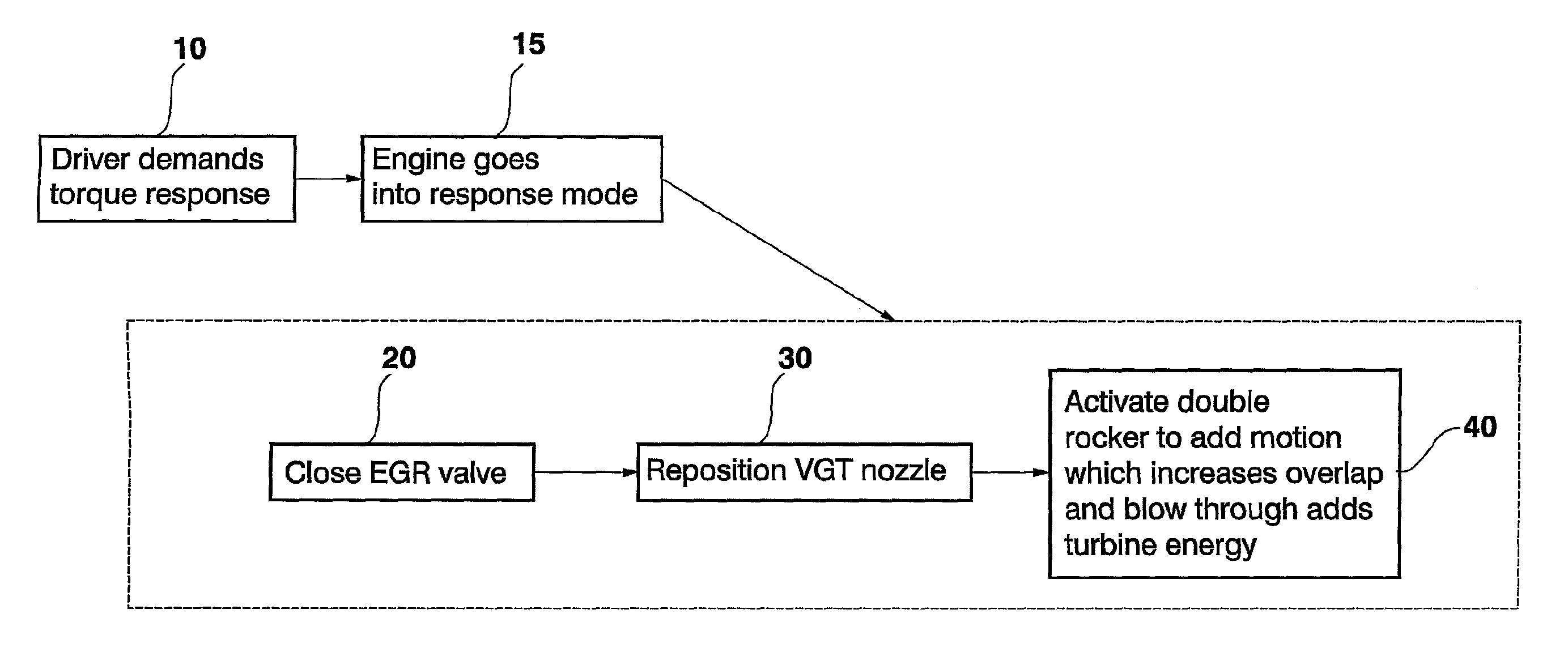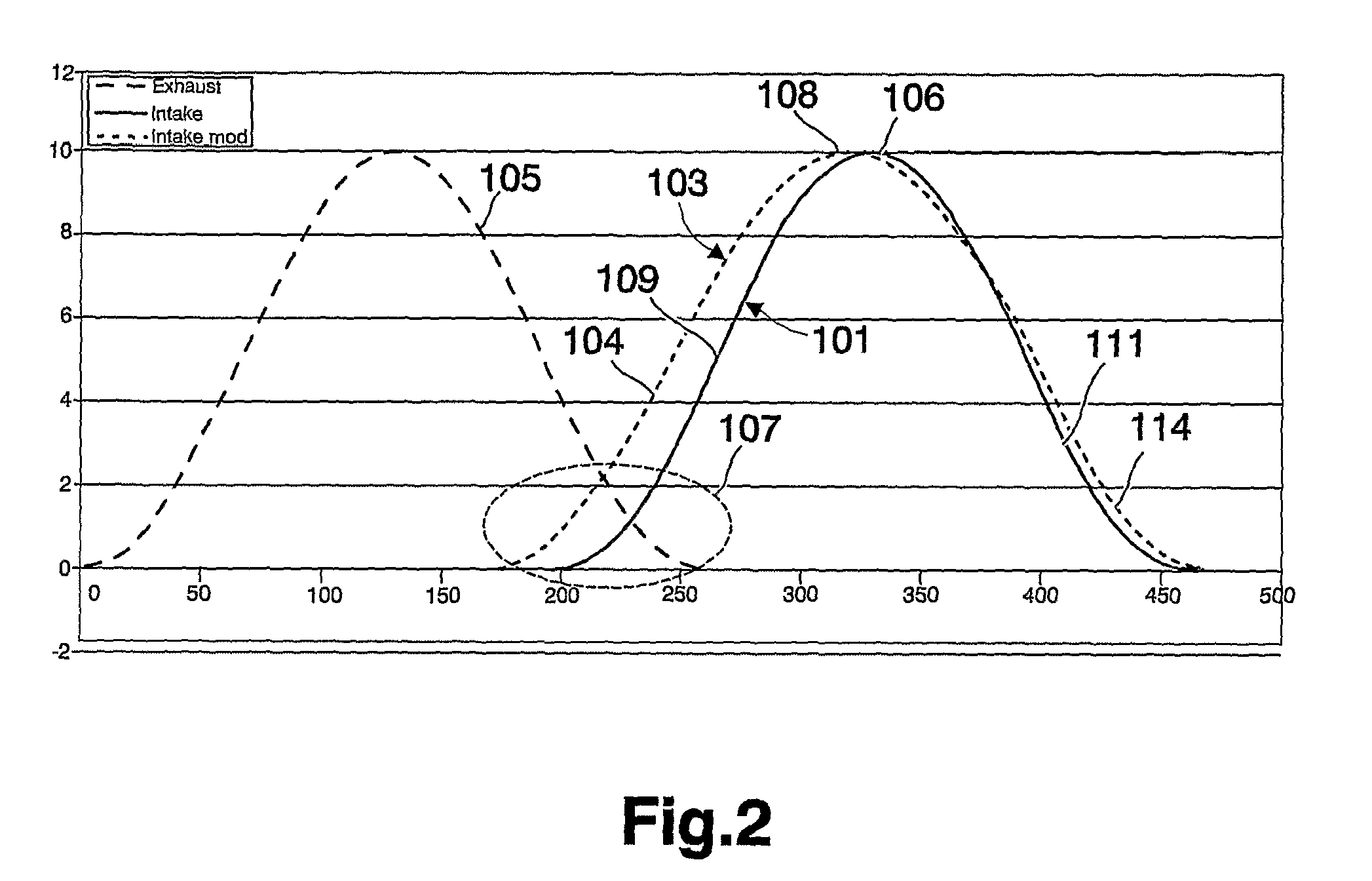Method and apparatus for variable valve actuation
a variable valve and valve actuator technology, applied in the direction of machines/engines, output power, electric control, etc., can solve the problems of reduced air-to-fuel ratio of in-cylinder mixture, pre-detonation or an unacceptable high internal engine cylinder pressure, poor acceleration, etc., to reduce turbolag and increase turbine acceleration
- Summary
- Abstract
- Description
- Claims
- Application Information
AI Technical Summary
Benefits of technology
Problems solved by technology
Method used
Image
Examples
Embodiment Construction
[0038]FIG. 1 illustrates schematically a flowchart of an example embodiment of a method for reducing turbolag in a turbocharged internal combustion engine. As seen in FIG. 6, the engine 1 comprises an inlet manifold 2, an exhaust manifold 3, an exhaust gas recirculation (EGR) line 4 between the exhaust manifold and the inlet manifold and including an EGR valve 5 and a Variable Geometry Turbine (VGT) turbo unit 6.
[0039]Said method for reducing turbolag comprising a first step 10 of demanding torque for shifting the internal combustion engine from a stationary engine mode to a transient engine mode. The demanding of torque may be performed by depressing an accelerator pedal by the driver. When the driver demands torque by depressing the accelerator pedal the engine goes into a response mode or a transient engine mode 15.
[0040]The transient engine mode may be characterized by a higher boost pressure than the exhaust pressure, i.e., the pressure upstream an inlet valve of the internal c...
PUM
 Login to View More
Login to View More Abstract
Description
Claims
Application Information
 Login to View More
Login to View More - R&D
- Intellectual Property
- Life Sciences
- Materials
- Tech Scout
- Unparalleled Data Quality
- Higher Quality Content
- 60% Fewer Hallucinations
Browse by: Latest US Patents, China's latest patents, Technical Efficacy Thesaurus, Application Domain, Technology Topic, Popular Technical Reports.
© 2025 PatSnap. All rights reserved.Legal|Privacy policy|Modern Slavery Act Transparency Statement|Sitemap|About US| Contact US: help@patsnap.com



